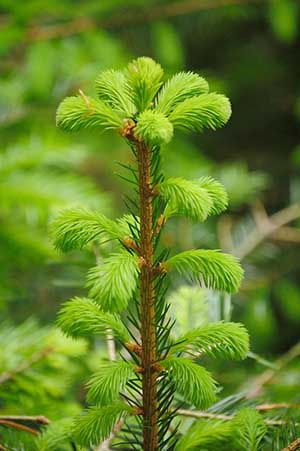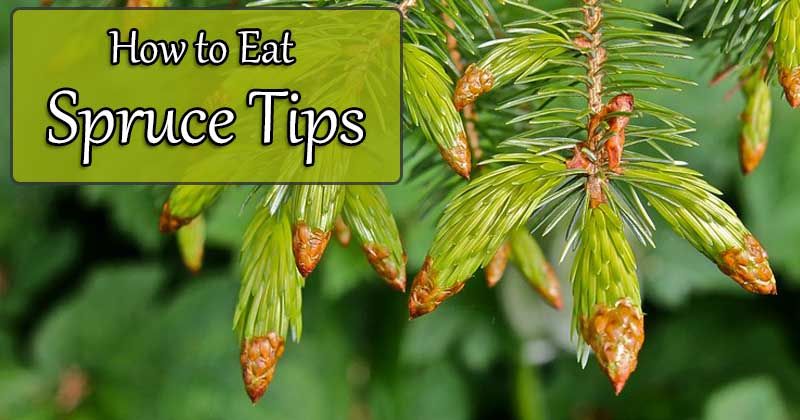If you look carefully at a spruce tree (or any conifer tree) in early spring, you will notice light green fan-like needles poking out of a papery case. These are the new buds of the tree. Unlike mature spruce needles, spruce tips are soft, tender and quite tasty. Spruce tips are also incredible superfoods and very easy to forage.
What Do Spruce Tips Taste Like?
Spruce tips have a resin flavor with a hint of citrus. The taste is very unique and can be best described as tasting like what a pine tree smells like.
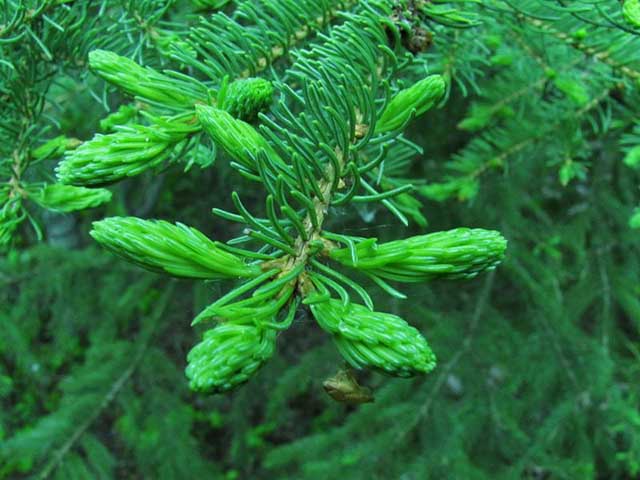
How to Gather Spruce Tips
Spruce tips start growing in early spring. You can gather the tips at any stage but I find it easiest (and most efficient!) to gather the tips when they are about 1 inch long. If they are too small, you will have a hard time grasping the little shoots and won’t get much food for your effort.
It takes a bit of practice to get fast at gathering spruce tips. I developed a technique where I hold the bag with one hand under the tip. I use the other hand to pluck a tip and drop it directly in the bag. It will still take a fairly long time to gather any significant amount of tips. Luckily, you don’t need too many spruce tips to make a tasty meal.
*If you have kids, this is a great project for them. Offer a reward to whomever gathers the most spruce tips and you’ll have a lot in no time!
After gathering the spruce tips, sort through them and remove any needles which got in there by mistake. There might be some bugs in there too. 🙂 Then just keep them in the fridge in a sealed container until you are ready to use them. They store very well so long as they aren’t allowed to dry out.
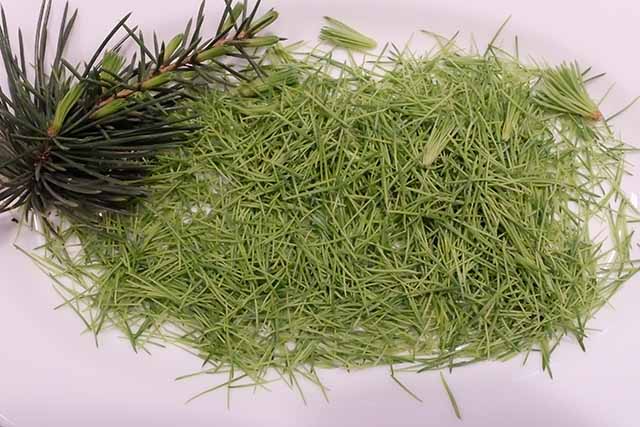
Gather Spruce Cones Too
You can often find immature male cones growing around the same time as the spruce tips. These cones are edible and have lots of health benefits. Read more about eating conifer cones here and the health benefits of conifer pollen here.
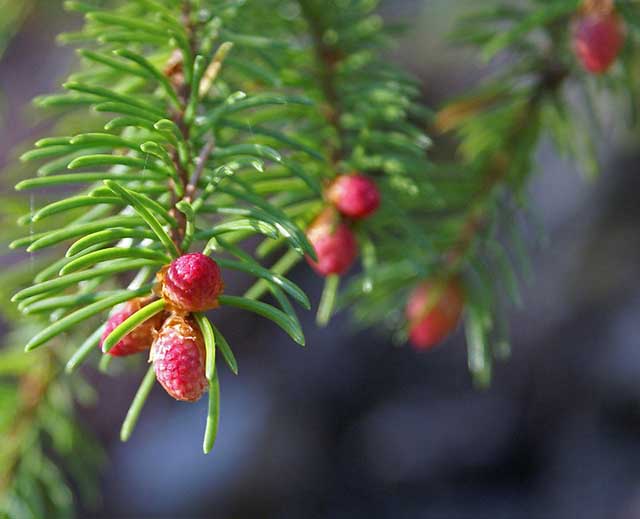
What to Do with Spruce Tips?
You can eat spruce tips raw or cooked. I generally prefer to eat them raw. I’ll give them a rinse and chop them up very small. Then they can sprinkled onto pasta or mixed into salads, spreads or dips. It is also very common to make syrup, pickles or beer out of spruce tips.
The taste of spruce tips is fairly strong, so you don’t need too much to add flavor to a dish. I find the spruce tips (as well as spruce cones) taste best with lemony dishes. See this recipe for lemony spruce tip mayo dip.
Can You Eat Pine Tips Too?
With the exception of ponderosa pine which is toxic, all pine tree tips (genus Pinus) are edible. Pine tips look very different than spruce tips. They are scaly, fairly thick and grow upwards from the end of the branches. I personally don’t like pine tips. They are too resinous and the flavor is very strong. But that doesn’t mean you won’t like them. There are many types of pine trees and some species might have better-tasting tips than others.
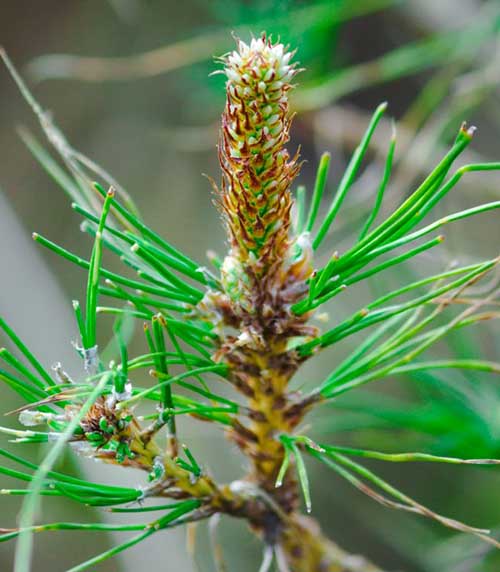
What About Other Conifer Tips?
In addition to spruce and pine tips, these conifers also have edible shoots.
- Firs
- Hemlocks
- True cedars (genus Cedrus)
- Redwoods
Identifying Edible Conifers
Most conifer tips are edible. The problem is that there are over 600 species of conifer trees. Many of these look incredibly similar and identifying them can be very hard.
While I definitely recommend getting a tree identification guide, it’s unrealistic that you’ll be able to ID every single conifer you come across. Instead, you might want to focus on memorizing the toxic conifers. There are only a few of those so, if you get those ones down, you won’t have to worry about mistakenly eating a toxic conifer.
You can find a good guide to identifying common conifers here and another one here.
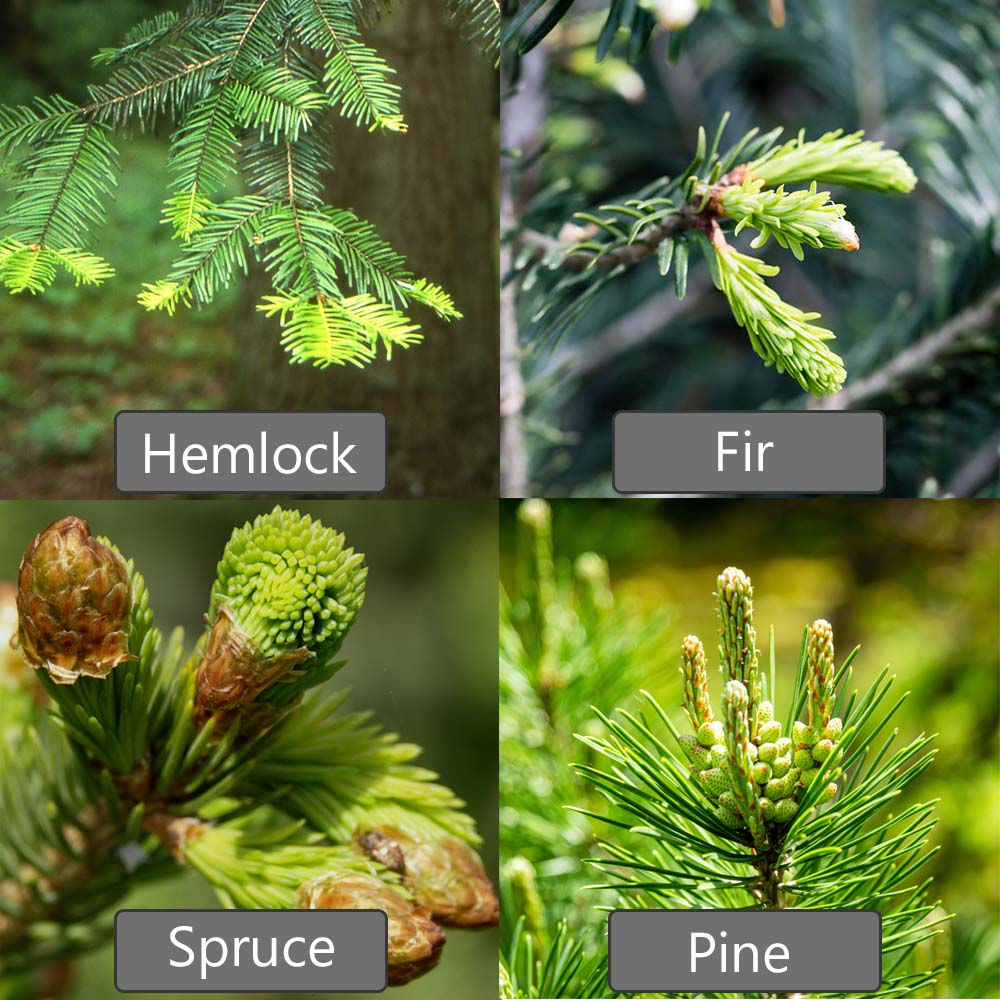
Which Conifers Are Toxic?
There are only a few conifers which are toxic. The main one is yew tree, which (IMO) is pretty easy to identify. Luckily, the other toxic conifers aren’t toxic enough to kill you, so you aren’t likely to die even if you mistakenly eat them (not that I’m recommending it!). The main issue with a lot of these toxic species is that they might cause abortion.
If you are pregnant or planning to be, it’s probably best to avoid eating conifers completely. Better to be safe than sorry!
Toxic Conifers List:
- Ponderosa pine (Pinus ponderosa): Might cause abortion in pregnant women
- Yew (Taxus baccata): These produce berry-like cones, so they are easy to identify.
- Norfolk Island pine (Araucaria heterophylla): Not actually a true pine, these may be toxic.
- Yew pine (Podocarpus macrophyllus): Also not a true pine nor a true yew, these might be toxic. They are mostly found in Japan and China.
- Cupressaceae: Some members of this family, including juniper and eastern red cedar (not a true cedar) are quite toxic. Luckily, they are pretty easy to identify. Many species have scale-like leaves and berry-like cones.
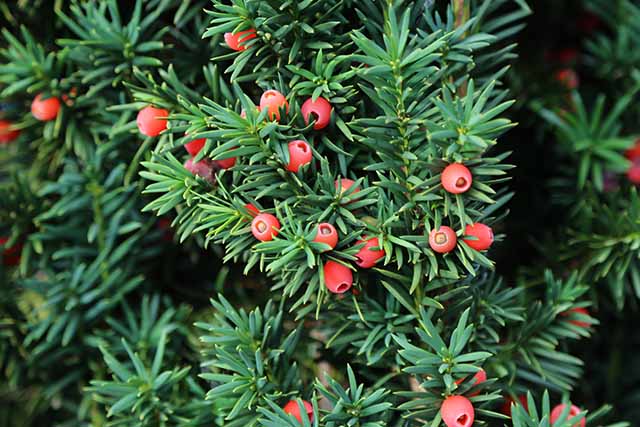
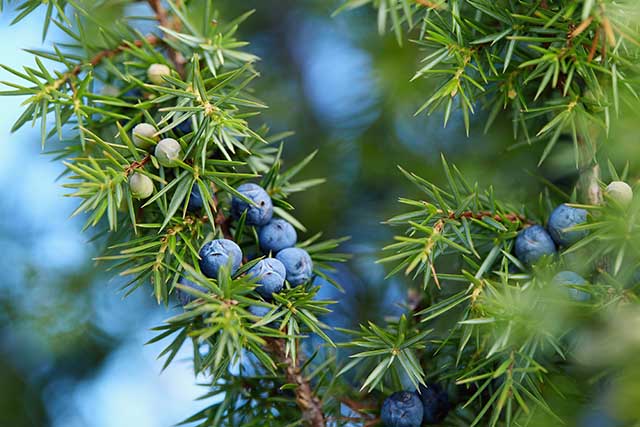
Does Foraging Spruce Tips Hurt the Tree?
Spruce tips are the tree’s new growth. By removing the shoots, you are limiting its growth. This usually isn’t a problem with older conifer trees – especially since there will be plenty of shoots which you won’t be able to get to. However, you should avoid harvesting tips from really young conifers.
